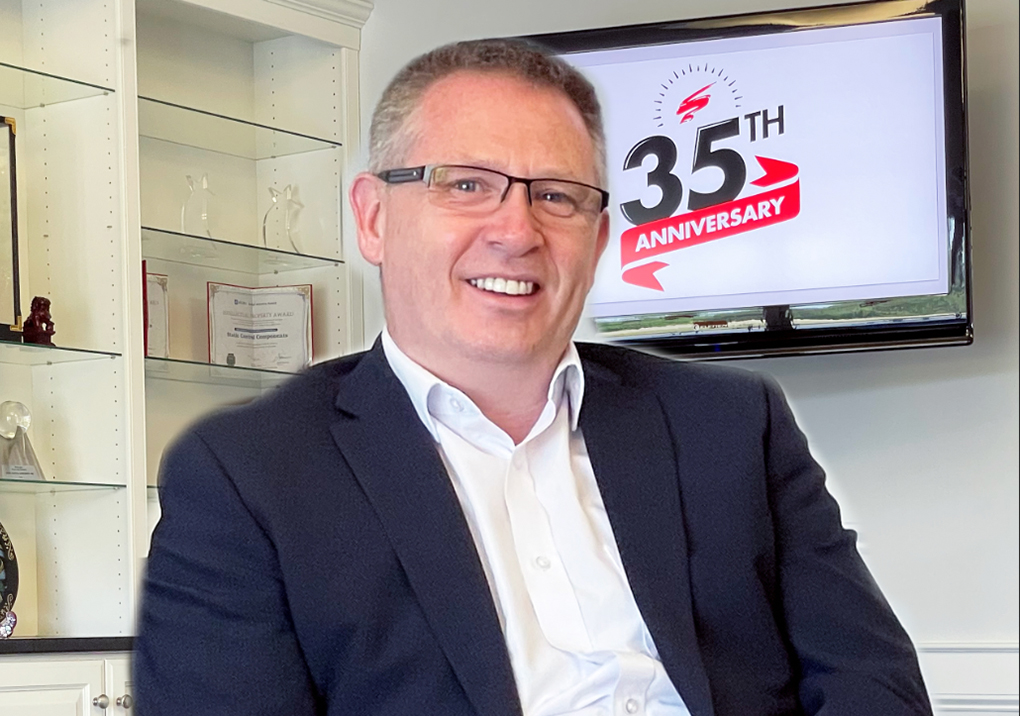Why the Trend Towards New-build Cartridges Will Become the Preferred Aftermarket Choice
Christian Pepper, President – LD Products Channel Partner Division

When RT Media asked me to write the argument for this article I had some soul searching to do. I have spent over 15 years of my career working for businesses involved in remanufacturing cartridges (remans). It is only in the last year as I joined LD Products that I began to immerse myself in the other Aftermarket methodology of new-build compatibles.
How New-builds compare against Remans:
Cost:
In a typical remanufactured cartridge, the collection and processing of empty cartridges accounts for 30-50 percent of the cost envelope. By comparison, after the plant and machinery necessary to mold new plastic shells has been capitalized, the cost of a new cartridge shell is less than 5 percent. As most of the global A4 printing volume is undertaken in segments like small office / home users, print is a commodity and the basic economic law of commodities is “lowest cost wins.”
Quality:
Most new build cartridges are sold today in retail channels—especially the Internet. While their quality is low in comparison to the standards that most reman cartridges are build to, the quality is acceptable for the price point customers are looking to pay.
Remanufactured cartridges score quality marks over new-builds for three primary reasons. First, they are sold to higher quality-demanding customers (like large businesses, or resellers in MPS). Secondly, higher-yield cartridges (usually above 10K pages and color) are more technically difficult to produce and third their volume sales are lower—which doesn’t justify the high investment costs of plastic molding plant/machinery.
Therefore, today… remanufactured consumables are generally higher in quality than new-build cartridges, because new-build manufacturers tend not to produce and compete in the channels where lower volume, large yield remanufactured cartridges are sold. As reman consumables are sold at a higher price, they are built using higher quality components and it is component selection that is the biggest driver in finished product quality.
However, this is changing as new-build manufacturers have consumed all the low hanging fruit of the retail channels and are beginning to move into channels where higher quality product is required. Already some new-build product, (for example my own company’s Gold Line) is built with a new shell and the high-quality components typically found in a reman product.
Intellectual Property:
While few end-users care about IP (mainly because they are unaware of it), all resellers must become experts. Ignorance is no defense under the law. However, there is a lot of Fear, Uncertainty and Doubt (FUD) about new-build IP infringement emanating from remanufacturers who are trying to protect their businesses.
There are several different types of cartridge—ink tanks and copier tubes for example—that have IP and litigation levied around the design of the shell. However, as far as I can find, integrated printer cartridges, like those found in Canon/HP engines, do not have any patents or litigation filed in the last ten years about the shell.
Therefore, the act of producing a new-build shell does not appear to infringe OEM IP. If it did, the millions of new-build cartridges that are imported into western market retail channels would not be permitted entry by customs agencies.
You will find remanufacturers and new-build manufacturers are both held to the same IP standards around the components inside the cartridge. I reiterate—not the new shell.
The reason lies with how the patent system works. A patent is awarded for “an invention that is a solution to a specific technological problem” (Wikipedia definition). Therefore, the OEMs have concentrated their product development around creating new components inside the cartridge that have specific purposes like the dongle and twisted prism gears for example. Obtaining a patent around the shell / cartridge case is probably impossible. The reason being all the OEMs have used shells for decades and there has been no way, to date, that an OEM could prove that their shell was a new invention that solved a specific technological problem befitting patent protection.
Supply (Time to Market and Continuity):
There is a delay from the time a new OEM cartridge is launched, to when an Aftermarket cartridge is launched. In order to provide ‘non-infringing’ products, both new-builds and remans need time to engineer the components and processes to build a legitimate product. Those remanufacturing cartridges have to wait until a steady stream of used cartridges, or cores, become available in order to begin production. Further, it is not uncommon for the supply of cores to “dry up” throughout the life cycle of a reman product. Remanufacturers cannot sell, what they cannot collect. New-builds, by comparison do not have these availability-related challenges.
Environmental Responsibility:
Traditionally, remanufacturers held the moral/economic high ground. However, in my experience very few consumers of printer cartridges really care about it. I wish they did—I have a family and caring for our planet is the right thing to do. In the past, a remanufactured cartridge contained a lot of OEM components that were reused. Not anymore. Nearly everything inside the core shell is replaced with new components: OPCs, chips, toner, rollers and blades. In this respect, the only thing that separates a new build from a reman is the plastic shell that weighs a few ounces or grams. It actually creates more carbon to ship spent cartridges that weigh several pounds from the consumer to the remanufacturer to be disassembled, have the used components removed and discarded (hopefully recycled) and remanufactured.
On this subject, I believe it is not the act of manufacturing the product that determines its green credentials, it is what the purchaser of the product does to ensure that downstream, the spent cartridge is kept out of landfill.
Where New Build Manufacturers Need to Improve:
Research and Development:
Most of the experience of new build manufacturers has been building low-quality products. They do not have a long track record of building higher-quality models. In many cases they do not know the component and toner “recipes” that remanufacturers use to produce cartridges with OEM equivalent print quality and yield (or extended yield) attainment.
Consistency:
The culture in the low-cost business is to have the manufacturing division find ways to take cost out of the product by introducing lower-cost components and processes—often without informing the customers. That does not work with higher-quality products destined for the enterprise channel. The fall in quality is the primary reason why many resellers in western markets, who have tried premium Chinese products, stop buying.
Intellectual Property:
Most major new-build manufacturers offer some form of indemnification in the event of OEM litigation but they need to do more to reassure their customers. Western market resellers are easily found and sued by OEMs in their own countries and many do not feel reassured that their partner is based overseas (in China). Many resellers believe the indemnification may not be worth anything and they will be left to face the fight alone.
Summary:
Print volumes are shrinking. The only way to grow your business (without diversification) is to out-compete the next company. Sales price reduction has been the tool every business has and will continue to use to stimulate demand.
As remanufacturers require a core, it is increasingly difficult for them to lower costs in line with customer expectations. This reason alone is why new-build cartridges will become the preferred Aftermarket choice. When you layer in the trends toward moving into higher-quality product segments and a growing commitment towards IP compliance, it’s hard to see a future where any other conclusion is probable. I believe that if the new-build business model continues to develop at the pace over the next five years that it has over the last five years, remanufactured products will continue to lose market share and will eventually be relegated to just niche segments. These include low-demand cartridges where the cost to invest in new-build shells is prohibitive or where the OEM cartridge has technological and patent barriers. This means reusing OEM components for a second cycle is the only option until a legitimate workaround solution is found.




Leave a Comment
Want to join the discussion?Feel free to contribute!